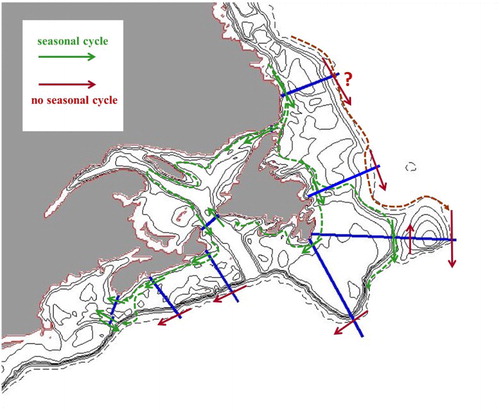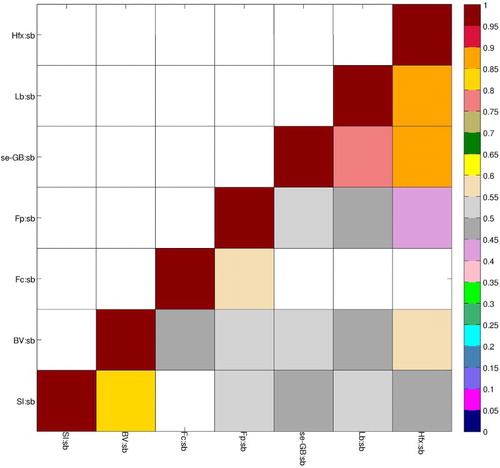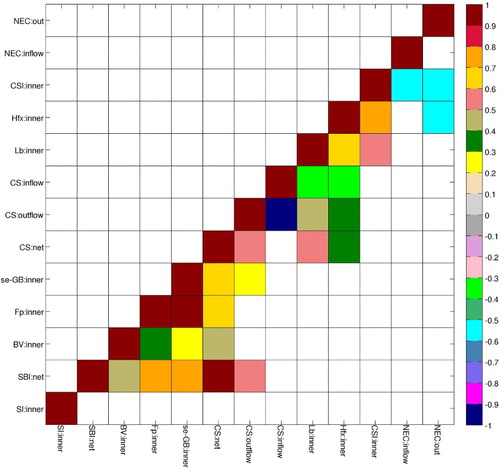Figures & data
Fig. 1 Schematic of the circulation in the study region. See for abbreviations used in figure. Blue (red) arrows denote cold (warm) current streams. The red dot denotes Halifax. The flow through Flemish Pass is illustrated by a dashed arrow.
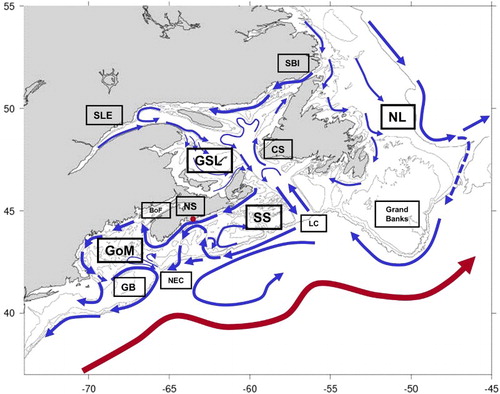
Fig. 2 Sections analyzed in this study (thick red lines). See for abbreviations used in figure. The Flemish Cap section was broken into Flemish Pass (Fp) and Flemish Cap (Fc) subsections. Isobaths are shown at 50, 100, 200, 300, 500, 1000, and 2000 m. The 1000 m isobath is in bold, the 2000 m isobath is dashed, and the 100 m isobath is blue.
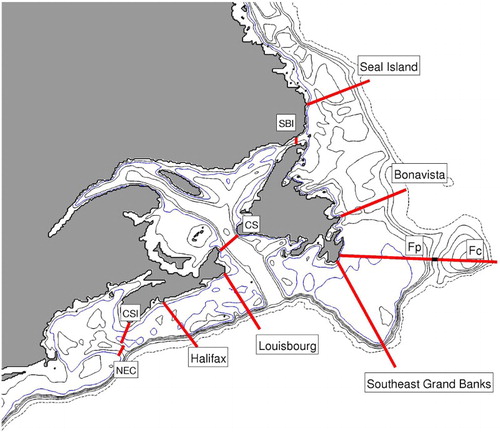
Table 1. Key section and place names and their abbreviations.
Fig. 3 Example of seasonal cycle fits showing (a) seasonal cycle behaviour at the inner part of the Louisbourg section and (b) no seasonal cycle behaviour at the shelf break of the Louisbourg section. The dashed blue lines are the raw data; red lines are the mean of the raw data; and the black lines are the model fits.
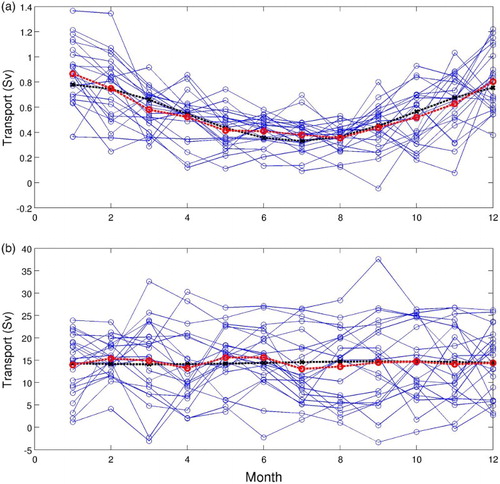
Fig. 4 Circulation and streamlines based on model climatological depth-averaged flow field. Streamlines selected to illustrate the various pathways from the northern Labrador Shelf to the south and west. See text for details. Isobaths as in .
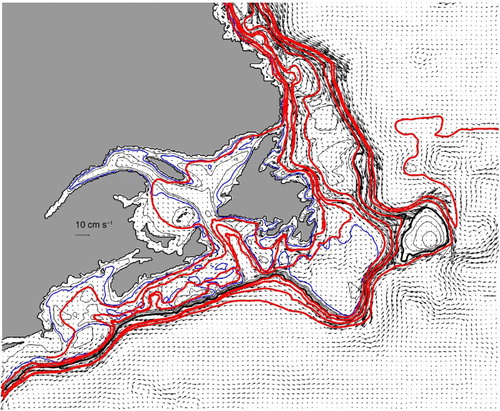
Fig. 5 Summary of seasonal cycle analysis. The green (red) arrows denote locations with (without) seasonal cycles; the question mark denotes an uncertain result. The dashed lines connecting the arrows are based on model velocity field streamlines.
